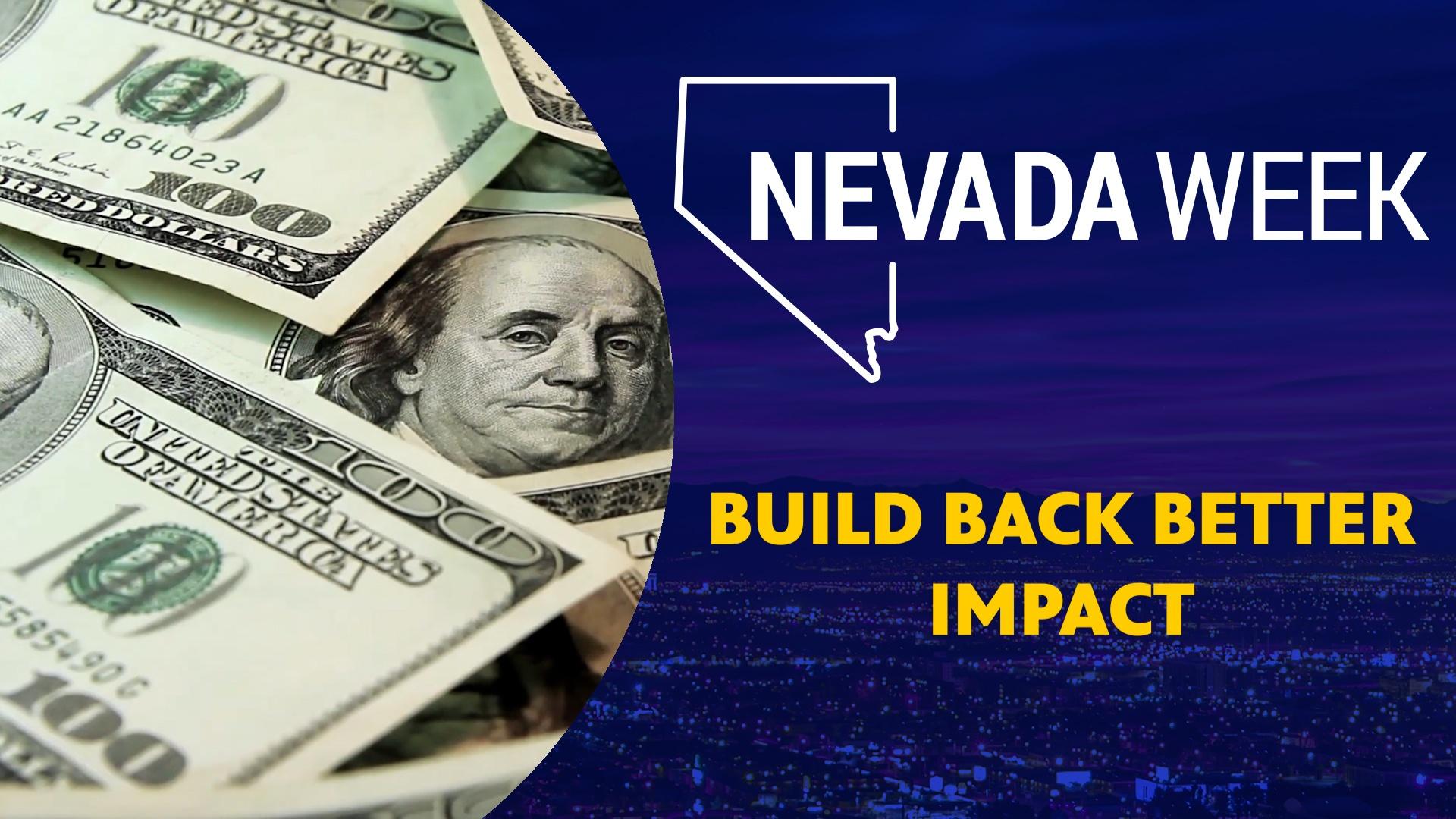Build Back Better Impact | Nevada Week


What impact could the Biden Administration’s proposed Build Back Better have on Nevada?

SEASON 4: EPISODE 30| Airdate: 2/4/2022
For months, Congress has wrangled over President Joe Biden’s domestic spending package known as Build Back Better. It covers a slew of programs designed to address everything from climate change to child poverty.
Now, after losing a battle over the filibuster and voting rights legislation, Democrats on Capitol Hill are turning their attention back to Build Back Better.
Congresswoman Dina Titus, D-NV talked to Nevada Week about Build Back Better and the bill that did get passed and signed by the president – the infrastructure spending package.
Under the bill, $8.3 billion will go towards western water infrastructure, which Titus says is vital to Nevada. She said water infrastructure is at the top of the list for the state.
“All you have to do… is go out to the lake and see the bathtub ring of how it’s going down,” she said, “In fact, it was declared an emergency this year for the first time. This money will be used for water conservation.”
She said the project is mostly going to help Nevada and California recycle Colorado River water. Titus said securing water for Southern Nevada is part of the equation as the area continues to grow but looks to grow in a sustainable way.
As for Build Back Better, Titus said it started out at $6 trillion, has been compromised down to $3 trillion, and now stands at a little less than $2 trillion. After not seeing forward motion on the plan, President Biden has suggested that it be broken up to be passed in pieces.
“I would like to see it passed as one big chunk” Titus said; however, she’s not opposed to passing programs “brick by brick,” choosing the pieces that are popular with voters and supported by Republicans.
Titus said physical infrastructure is covered in the infrastructure bill that was passed, but human infrastructure is also needed and that’s what’s covered by Build Back Better.
One piece of that ‘human infrastructure’ that did not get extended but has seen bipartisan support is the child tax credit. The American Rescue Plan increased the child tax credit from $2,000 per child to $3,000 per child – and $3,600 for children under 6.
Instead of parents receiving that credit in a lump sum after filing taxes, they got half of it in monthly payments of $250 to $300. That was from July to December of last year. Congress did not extend the credit into this year.
Supporters of the child tax credit said it lifted millions of children out of poverty. Opponents said the program is too large and costs too much.
Many families used that money to help pay for child care.
Making child care more affordable is one of the main pillars of the Build Back Better plan. Among other things, it would help parents in need to pay for child care and it would increase pay for child care workers.
Denise Tanata is the early childhood systems director for Children’s Cabinet, a Nevada non-profit focused on helping children and families in need.
She told Nevada Week that staffing has long been a problem for child care facilities. She said many child care workers qualify for public assistance programs because the pay is so low. She also noted that many child care facilities do not offer benefits like medical and dental.
Amanda Haboush-Deloye is the interim executive director for the Nevada Institute for Children’s Research and Policy at UNLV. She said the pandemic made the child care situation in Nevada worse. She said centers had to shut down because of low attendance or because of rules around social distancing.
Tanata said that federal investment in quality child care is something that is long overdue in this country.
